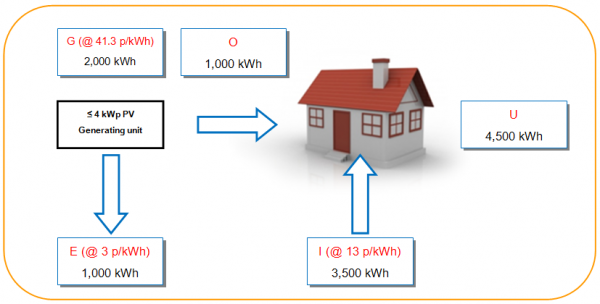Feed-in Tariff Information
Feed-in Tariff Information
Introduction to the Feed-in Tariffs
The Department of Energy and Climate Change (DECC) has introduced a system of feed-in tariffs (FITs) to incentivise small scale, low carbon electricity generation. This is also known as the “clean energy cashback scheme” and has been in operation since April 2010. People who invest in small scale low carbon electricity are now guaranteed payment both for the electricity they generate and export.
Small scale low carbon electricity producing technologies eligible for FITs are:
-
Wind
-
Solar Photovoltaics (PV)
-
Hydro
-
Anaerobic Digestion (AD)
-
Micro Combined Heat and Power (Micro CHP)
Wind, Solar PV and Hydro projects of 50 kW or less and pilot Micro CHP projects will have to use the Microgeneration Certification Scheme (MCS) in order to be confirmed for their eligibility for FITs.
Structure of the Feed-in Tariffs
FITs can be paid to individuals, households, communities and businesses when they generate electricity from eligible small scale low carbon energy sources. The FITs consist of two elements of payment, made to generators (e.g. homeowners), and paid for by licensed electricity suppliers:
The “generation tariff”
A fixed price per kilowatt-hour (kWh), set at different levels for different technologies and installation sizes. The tariff levels will lower for new projects over the years, but any individual installation will continue to receive the same generation tariff level throughout its entire support period under the FIT scheme. This is paid for every kWh of electricity generated. The tariff will increase annually with inflation.
The “export tariff”
Generators are guaranteed an extra 3 pence per kWh (p/kWh) for any electricity generated that is not used on-site.
Generators also benefit because they can use the electricity they generate on-site to offset some or all of the electricity they would otherwise have had to buy. Tariffs are set through consideration of technology costs and electricity generation expectations at different scales, and are set to deliver an approximate rate of return of 5-8% for well sited installations. Accordingly, the tariffs that are available for new installations will “degress” each year. FITs income for domestic properties generating electricity mainly for their own use will not be taxable income for the purposes of income tax.
Level of tariffs
The following table is not exhaustive, for the full table please visit www.decc.gov.uk. The table demonstrates the generation tariff in pence per kWh. Note: The feed-in tariffs are linked to the Retail Price Index.
|
Technology |
Scale |
01/04/10 - 31/03/12 |
01/04/12 - 31/03/13 | 01/04/13 - 31/03/14 |
Tariff lifetime (years) |
| Solar PV | =< 4 kWp (retro fit) | 41.3 | 37.8 | 34.6 | 25 |
| Solar PV | =< 4 kWp (new build) | 36.1 | 33.0 | 30.2 | 25 |
| Solar PV | > 4-10 kWp | 36.1 | 33.0 | 30.2 | 25 |
| Wind | =< 1.5 kW | 34.5 | 32.6 | 30.8 | 20 |
| Wind | > 1.5-15 kW | 26.7 | 25.5 | 24.3 | 20 |
| Wind | > 15-100 kW | 24.1 | 23.0 | 20.9 | 20 |
Illustration of potential electricity flows for an onsite generator
In this illustrative example, the site generates (G) 2,000 kilowatt-hours (kWh) per annum (here with a retrofitted <4 kWp solar PV system) which is metered using the site’s generation meter. They are then assumed to have exported (E) 50% of their generation onto the local electricity network (either as metered exports or deemed exports). The other 50% of generation is used on-site (O). The household uses (U) a total of 4,500 kWh per annum, therefore, they need to import (I) 3,500 kWh from their electricity supplier.
Using this illustrative example, the generator will receive a FITs payment of £856 per annum (made up of a generation tariff payment of 2,000 kWh x 41.3 p/kWh = £826 plus an export tariff payment of 1,000 kWh x 3 p/kWh = £30). They also derive a benefit from the 1,000 kWh they generate and use on-site as that will offset 1,000 kWh they would otherwise have had to buy from their electricity supplier. Assuming an import price of 13 p/kWh this would be a saving of £130 (1,000 kWh x 13 p/kWh).

